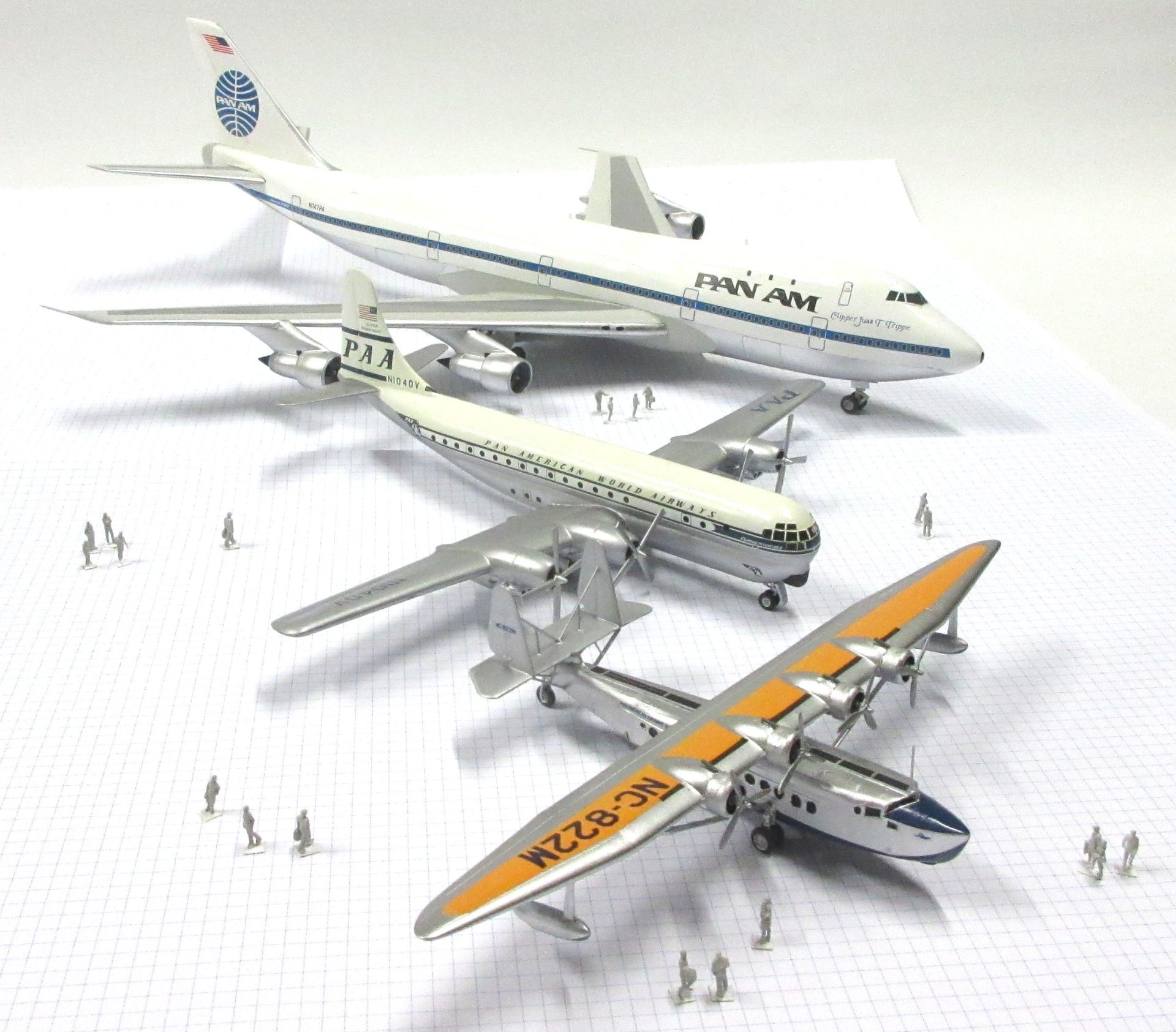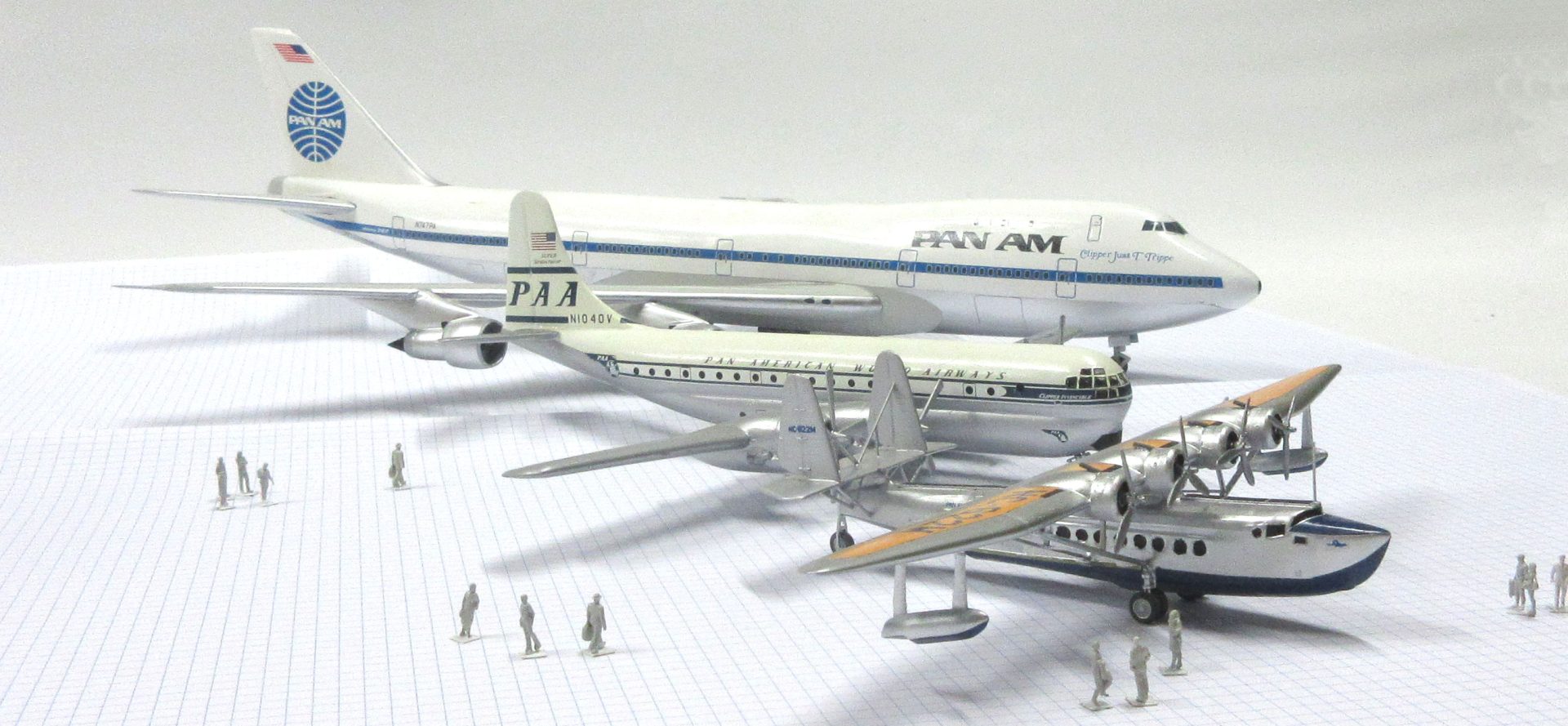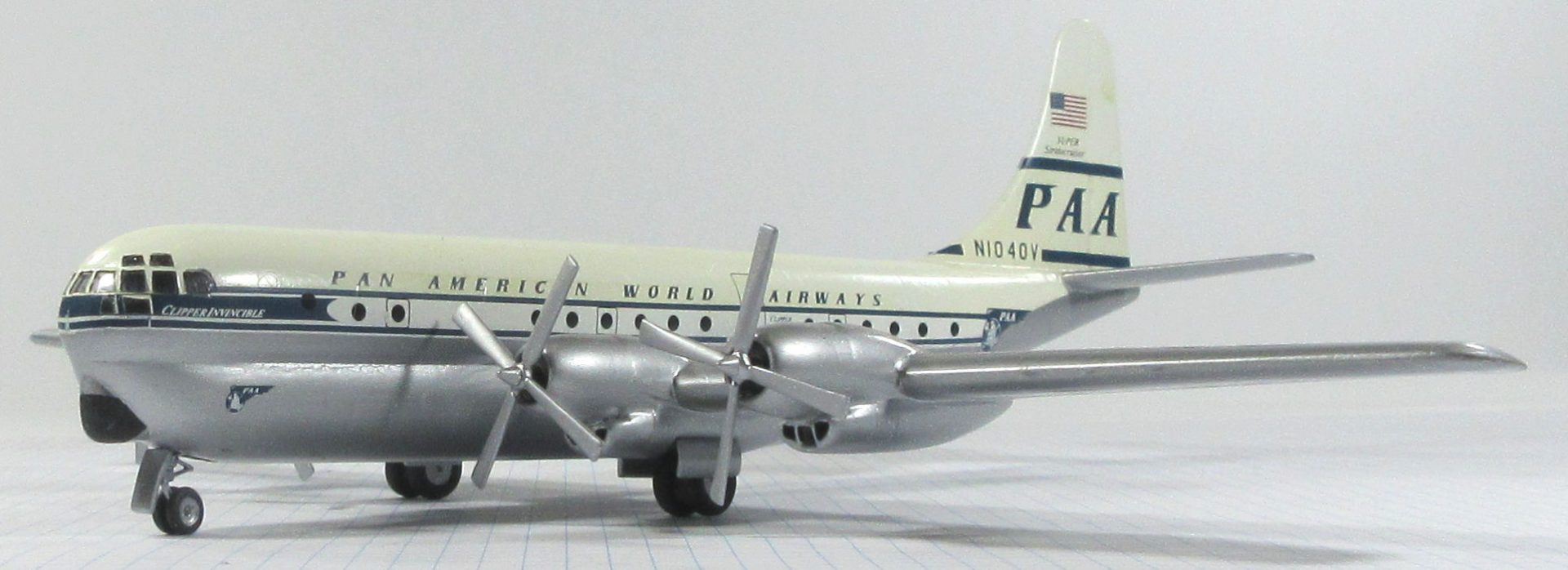Pan American Airways – an extremely short history
Sikorsky S-42-A – Boeing 377 Stratocruiser – Boeing 747-100

In its day Pan American Airways was one of the worlds leading airlines and perhaps the most well known with its unique ‘Pan Am’ logo. It began in 1927 flying between Florida and Cuba and expanded rapidly in the 1930s with a series of innovative flying boats and routes that extended into South America and across the Pacific to China and New Zealand. After the war it became the epitome of modern, sophisticated air travel and introduced the world to jet travel with its Boeing 707s and 747s. In 1970 it flew eleven million passengers to 86 countries in every continent except Antarctica.
It’s decline began with the deregulation of United States air transport in 1978 when new and more efficient airlines began eating into its domination. Rising competition forced it to gradually sell off its assets and the airline was declared bankrupt in 1991.
Sikorsky S-42-A in 1/144 by Air Craft Models
This aircraft was an improved and enlarged development of earlier Sikorsky flying boats and was designed to fly trans-oceanic distances. The first one flew in March 1934 and ten were made, all for Pan American. They served primarily on the route from Miami to Rio de Janeiro and New York to Bermuda. A Sikorsky 42 surveyed routes to China in 1935, New Zealand in 1937 and commenced a first regular airline crossings of the North Atlantic, flying to England and Portugal. They had all been scrapped or lost in accidents by 1947.
I made this model using the 1990s Air Craft Models kit which is a combination of vacform and white metal parts. It was, for me, one the most challenging kits I’ve ever made and I wouldn’t recommend it to anyone unless they really wanted a S-42 in their collection. That is if they can find a copy over the interweb to begin with. There’s no other options that I know of in 1/144 but I see Anigrand offers a S-42 in 1/72. If I was keen on making my airliners in that scale I would certainly have a go at it, knowing how Anigrand kits go together. It would be a challenge, but not as much as this Air Craft Models kit.
Boeing 37After Pan American7 in 1/144 by Minicraft
This aircraft was a commercial version of the Boeing C-97 military freighter which was, in turn, developed from the Boeing B-29 and B-50 bombers. It was the most expensive airliner of its time and experienced reliability problems, mainly with its engines and propellers so only 56 were built. Pan American was the launch customer with an order of 20 and introduced them into service on the San Francisco to Honolulu route in April 1949 and on transatlantic services by the end of that year. The Boeing 377 was one of the most advanced and capable propeller-driven transports of its time and among the most luxurious. However, the arrival of jet airliners towards the end of the 1950s saw then quickly disappear from major airlines and Pan American flew its last one in 1961.
The Minicraft 1/144 kit from which this model was made is, shall we say, satisfactory. The model can be improved a little by aftermarket engines and propellers, but the improvement is not great. Unfortunately, the only other option is the full vacform kit from Welsh Models which might be a little better but would require a significant amount of work to get a good result. The Minicraft kit comes five in different boxes with decals that cover the main airlines that flew the Boeing 377, so some satisfaction might be found in making them all and looking at the gorgeous schemes this airliner flew in. I wrote a Workbench Note about making this model which has more to do with painting than construction.
Boeing 747-100 in 1/144 by Revell
After Pan American introduced the Boeing 707 jet airliner to the airways in October 1958 it began looking for an airliner more than twice its size to reduce operating costs by thirty percent. Boeing’s answer was the Boeing 747 which could carry over three hundred passengers. In April 1966 Pan American ordered 25 747-100s, well before the first flight in February 1969, and introduced them to service in January 1970. Subsequently over 1,500 Boeing 747s have been manufactured, they revolutionized international air transport and tourism because they could carry so many passengers so efficiently and cheaply.
This model represents the first Boeing 747-100 that Pan American flew, named the Clipper Juan Trippe in honour of the entrepreneur who led the airline through its great period of airline dominance. It was made using the Revell 1/144 kit of the Boeing 747-200 because the only real external difference between the -100 and -200 versions was the number of windows on the upper deck. The decal sheet I used had decals for the -100 windows so the conversion was very easy. You are in luck with the 747-100 because Revell published a ‘50th Anniversary’ kit in 2019. It is, however, the same kit Revell first published around 1976. I made this model from the kit sold in an Advent box in 1979 that I thought was pretty good for its time. I previously had a go at making the Airfix 747-200 kit and wrote a Workbench Note about the experience – in short, I was not impressed. There are a lot of Boeing 747 kits for sale on the interweb but not too many of the -100 and -200 versions at anything like a good price. So good luck with that.



